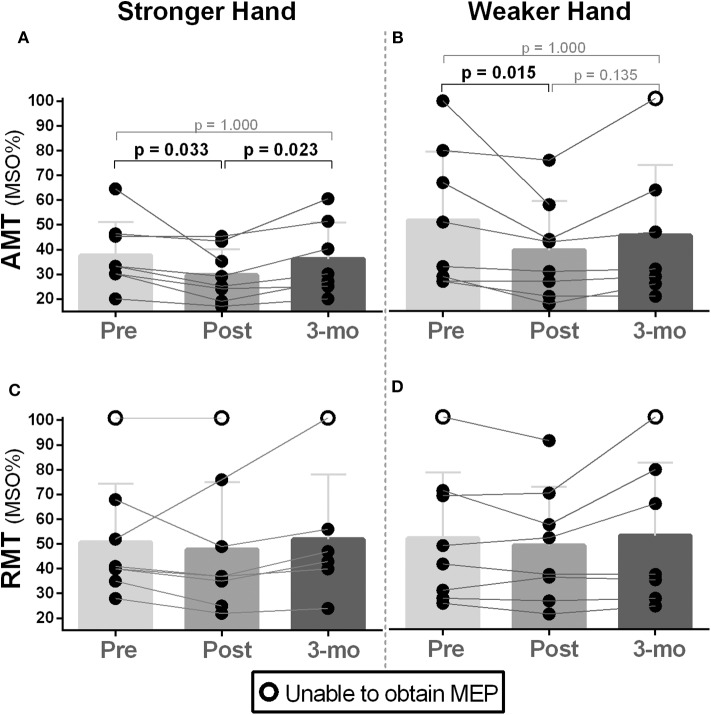Figure 1.
Effects of 10-week treadmill walking exercise training on active and resting motor thresholds. (A,B) Increased corticospinal excitability (CSE) was noted during active motor threshold (AMT) assessment in both brain hemispheres (i.e., corresponding to the weaker and stronger hands) as lower values of the maximal stimulator output (MSO%) were needed to elicit motor-evoked potentials (MEPs) in the contralateral first dorsal interosseous muscle (200 μV amplitude MEPs collected during 10% of pincer grip maximal voluntary contraction). AMT returned to baseline during the 3-month follow-up period assessment (3 mo). (C,D) There was no difference in MSO% between time points (pre, post, 3-month follow-up) for resting motor threshold (RMT) (i.e., MEPs collected during resting) measured in the hemisphere corresponding to the weaker hand. Because the absence of MEPs is an outcome that represents too low CSE (i.e., 100% of MSO not eliciting MEPs) (71), participants in this condition are represented as open circles. Preintervention, too low CSE (i.e., no MEPs) was noted in participant 2's stronger and weaker hands during RMT assessment. This participant's weaker hand demonstrated some recovery of CSE post-intervention as RMT's MEPs could be elicited at 92% of MSO. Lowered CSE (no MEPs) at 3-month follow-up was noted in participant 8's weaker hand as AMT and RMT could not be recorded.

